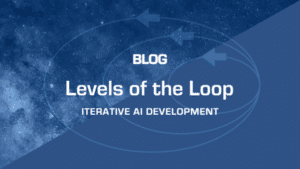The insurance industry is no stranger to data. However, the advent of Artificial Intelligence (AI), and particularly the use of large language models and knowledge graphs, is fundamentally transforming various aspects of property and casualty insurance. Let’s delve into how these technological innovations create a powerful synergy that dramatically amplifies operational efficiency, customer satisfaction, and profitability for carriers.
Claims Analysis
Claims processing is one of the most sensitive and resource-intensive aspects of insurance. The use of Intelligent Process Automation (IPA) helps in automating the classification and annotation of a new claim. However, large language models can augment this by adding a nuanced understanding of natural language, making the process not just automated but also deeply insightful.
Imagine a situation where an AI model can instantly sift through unstructured claim notes, understand the context, and route it to the right Subject Matter Expert. This will result in a faster turnaround and higher accuracy. When combined with knowledge graphs that encapsulate historical data and claim patterns, carriers can forecast trends and potentially problematic claims, enhancing both customer satisfaction and operational efficiency.
Commercial Underwriting
Traditionally, commercial underwriting is a cumbersome process, often involving thousands of pages of documentation. While insurance workflow automation can streamline tasks, AI models can add a layer of intelligent data interpretation. For instance, knowledge graphs can map complex relationships between different risk factors, empowering IPA solutions to calculate more accurate “scores” for potential customers.
Multifaceted AI Models in Insurance
Insurers deploy an array of models from underwriting models predicting negative proposal risk, claim risk models for portfolio management, to customer churn and fraud detection models. With the interpretative power of large language models and the relational mapping of knowledge graphs, these models can move from merely transactional to deeply transformational.
Customer Service and Beyond
Chatbots have been around for a while, but what makes AI-powered chatbots unique is their ability to understand and process natural language efficiently, thanks to advances in NLP (Natural Language Processing). These chatbots can answer questions, assist with policy information, and even guide through claims submissions. They are becoming sophisticated counselors rather than mere query solvers.
Risk Management
Incorporating AI into risk assessment means not just evaluating historical data but also projecting future risk scenarios. Knowledge graphs can track and relate external factors like weather conditions, political climate, or economic indicators with past claim data. Carriers can then receive real-time alerts about potential high-risk scenarios or markets.
Contract Analysis and Financial Documents
Large language models can decipher complex legalese within contracts and financial documents. They can be used in policy processing, billing form reviews, and customer onboarding, ensuring compliance and reducing risks of human error.
Exposure Schedules and Portfolio Management
AI can help in actively managing exposure schedules and portfolios by tracking multiple data points and identifying potential risks or opportunities for better investment decisions.
Submissions, Policies, Binders, and Quotes
These critical touchpoints in the insurance sales cycle can be automated and optimized. Large language models can process the natural language in these documents, while knowledge graphs can help in relating this information to specific market trends or regulations.
The Future of Carrier AI Adoption
The transformative potential of AI in property and casualty insurance is immense. While individual technologies like IPA, AI models, or chatbots offer significant advantages, the true ‘superpowers’ for carriers lie in the integration of large language models and knowledge graphs. They bring in a nuanced understanding of unstructured data, the capability to relate seemingly disparate data points, and the ability to forecast trends from a macro to a micro level. It’s not just about doing things faster or cheaper; it’s about doing them smarter.
The future is not just automated; it’s intelligently automated. And for the insurance carriers willing to invest in these technologies, the road ahead is promising.
Want to learn more? Contact us and let’s get started!





